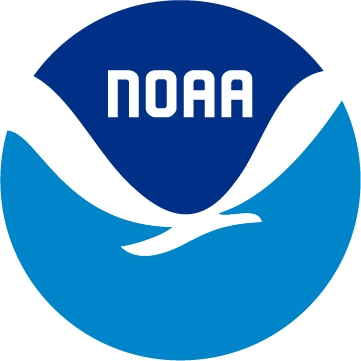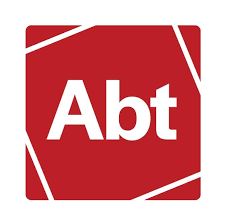Floods don’t exactly wait for the right time – they just happen, and lately, they’ve been happening more often and with more force. Whether you’re working in infrastructure, city planning, insurance, or just trying to make smarter decisions around climate risk, having reliable flood assessment tools is no longer optional – it’s essential.
The good news? Technology has caught up. From AI-powered satellite analysis to real-time flood simulations, there are some seriously impressive tools out there helping people predict and prepare before the water even starts to rise. Below are a few worth keeping an eye on this year.

1. FlyPix AI
When it comes to assessing flood risk, having access to accurate geospatial data can make all the difference. At FlyPix AI, we focus on helping organizations interpret satellite, aerial, and drone imagery with speed and precision. Our platform uses AI agents to detect and analyze objects in large-scale geospatial datasets, making it easier to monitor flood-prone zones, assess land use, and track changes in terrain or infrastructure over time. Instead of manually annotating thousands of images, teams can automate detection workflows and gain insights that help identify early indicators of flood exposure or drainage issues.
Because our technology adapts across different industries, it fits naturally into flood management and disaster preparedness efforts. Whether used by local governments, environmental teams, or insurers, FlyPix AI provides the analytical backbone for projects that depend on timely geospatial interpretation. With the ability to train custom AI models without coding experience, users can tailor the platform to specific geographic conditions or flood-related features, supporting better decisions in both prevention and response planning.
Key Highlights:
- AI-based automation of satellite, aerial, and drone image analysis
- Object detection and terrain interpretation for geospatial datasets
- Custom model training for specific environmental or flood indicators
- Cloud-based processing that reduces manual annotation time
- Adaptable for multiple sectors including government, infrastructure, and environmental projects
Who it’s best for:
- Government agencies monitoring flood-prone regions
- Environmental and risk management teams
- Insurance companies assessing exposure and claims potential
- Infrastructure and construction firms working in flood-sensitive areas
- Research institutions analyzing geospatial and climate data
Contact and Social Media Information:
- Website: flypix.ai
- Email: info@flypix.ai
- LinkedIn: www.linkedin.com/company/flypix-ai
- Address: Robert-Bosch-Str. 7, 64293 Darmstadt, Germany
- Phone: +49 6151 2776497

2. NOAA Quick Flood Assessment Tool
NOAA’s Quick Flood Assessment Tool is all about making coastal flood risk evaluation simpler. You plug in things like your tide gauge location and flood thresholds, and the system automatically runs the numbers – projecting how sea level rise and tides could affect your area over time.
Instead of complicated modeling or guesswork, it gives you a clear view of how often flooding might happen and what kind of impact it could have. It’s especially useful for planners, engineers, and communities trying to prepare for what higher tides will mean in the coming decades.
Key Highlights:
- Automates calculations of coastal flood frequency and future impacts
- Uses NOAA tide gauge data and user-defined thresholds for assessments
- Allows users to explore how sea level rise affects local flooding patterns
- Provides structured outputs for reports and planning documentation
- Integrates with broader flood impact analysis workflows
Who it’s best for:
- Coastal planners and stormwater managers
- Municipal and regional decision-makers
- Environmental engineers and infrastructure teams
- Researchers studying coastal resilience and flood projections
- Policy professionals evaluating flood adaptation strategies
Contact Information:
- Website: coast.noaa.gov
- Facebook: www.facebook.com/NOAADigitalCoast
- Twitter: x.com/NOAADigCoast
- LinkedIn: www.linkedin.com/showcase/noaa-coastal-management
- Instagram: www.instagram.com/NOAADigitalCoast

3. ClimateCheck
ClimateCheck provides a data-driven platform designed to help users understand how climate change may impact specific properties or regions in the coming decades. Their system combines dozens of global and national climate models to assess exposure to a range of hazards, including floods, storms, droughts, wildfires, and extreme heat. What sets this tool apart is how it translates complex scientific projections into practical insights that can be applied by real estate professionals, investors, and community planners. Instead of dealing with raw data or technical reports, users can quickly access clear, location-specific evaluations of both current and future risk levels.
In the context of flood risk assessment, ClimateCheck offers a layered understanding of potential flood hazards, including storm surge, riverine (fluvial), and surface water (pluvial) flooding. The tool doesn’t just highlight areas at risk – it shows how these risks evolve over time under different climate scenarios. This helps organizations anticipate changing flood patterns and plan adaptive strategies for property development, infrastructure investment, or urban resilience. As climate risks become a bigger factor in property value and insurance considerations, platforms like ClimateCheck are increasingly vital for making informed, forward-looking decisions.
Key Highlights:
- Aggregates 60+ global and regional climate models into one platform
- Covers multiple flood types, including storm surge and sea level rise
- Provides future risk projections under different climate scenarios
- Offers property-level and regional climate hazard assessments
- Integrates easily with portfolio analysis and enterprise tools
Who it’s best for:
- Real estate professionals and developers
- Urban and regional planners
- Insurance and lending institutions
- Investors assessing long-term property risks
- Researchers and consultants focused on climate adaptation
Contact Information:
- Website: climatecheck.com
- E-mail: info@climatecheck.com
- Facebook: www.facebook.com/myclimatecheck
- Twitter: x.com/MyClimateCheck
- LinkedIn: www.linkedin.com/company/myclimatecheck
- Instagram: www.instagram.com/myclimatecheck

4. The National Map Viewer
The National Map Viewer, developed by the U.S. Geological Survey (USGS), serves as a central hub for accessing detailed geographic data across the United States. It brings together multiple layers of environmental, hydrological, and elevation information, allowing users to explore landscapes, water networks, and topographic features through an interactive web interface. While it’s widely used for mapping and geospatial analysis, the tool also plays a growing role in understanding and assessing flood risks. By combining elevation data from the 3D Elevation Program with surface water datasets from the National Hydrography Datasets, users can analyze terrain, drainage patterns, and water flow behavior – key elements in identifying flood-prone areas.
As flood modeling and resilience planning increasingly depend on precise elevation and hydrology data, The National Map Viewer provides a foundation that supports both scientific research and practical decision-making. Flood risk analysts, city planners, and environmental engineers use it to visualize floodplain extents, locate vulnerable infrastructure, and inform mitigation strategies. Because it’s continuously updated and publicly available, the platform remains one of the most accessible and reliable sources of geospatial data for flood-related studies. Its versatility also makes it useful in broader hazard assessments, from erosion and land cover changes to emergency response planning.
Key Highlights:
- Integrates multiple national datasets, including elevation and surface water systems
- Offers seamless, regularly updated geographic coverage for the U.S. and its territories
- Supports 3D Elevation Program (3DEP) data for terrain and floodplain analysis
- Provides interactive tools for mapping water networks and land features
- Accessible through data downloads, web services, and an online viewer
Who it’s best for:
- Hydrologists and flood risk analysts
- Urban and environmental planners
- Emergency management and disaster response teams
- Researchers studying land and water interactions
- Public agencies and organizations involved in resilience planning
Contact Information:
- Website: www.usgs.gov/tools/national-map-viewer
- E-mail: tnm_help@usgs.gov
- Facebook: www.facebook.com/USGeologicalSurvey
- Twitter: x.com/USGS
- LinkedIn: www.linkedin.com/company/usgs
- Instagram: www.instagram.com/usgs
- Phone: 1-800-252-4547

5. Global Flood Risk Tool
Haskoning’s Global Flood Risk Tool (GFRT) is a cloud-based platform designed to help users analyze, visualize, and understand flood risks across different scales – from local sites to entire regions. It combines data science, hydrology, and cloud computing to produce fast, data-driven insights into potential flooding scenarios. What sets it apart is its ability to run complex models through scalable supercomputing power, allowing users to view results almost instantly. This helps researchers, planners, and organizations better grasp where flooding is most likely to occur and what kind of damage it could cause, supporting smarter planning and prevention strategies.
The tool’s five-step approach guides users through assessment, adaptation, and mitigation planning. It uses artificial intelligence and machine learning to identify vulnerable assets, even in places where geospatial data is limited, and can automatically generate flood damage estimates or economic impact reports. Its outputs are not just visual maps but actionable insights that compare adaptation costs with potential savings from reduced flood damage. Because it integrates with open-source tools and existing models, the GFRT fits easily into broader risk management frameworks. For teams focused on resilience planning in flood-prone areas, it offers a practical way to test scenarios, evaluate investments, and prioritize protective measures.
Key Highlights:
- Cloud-based flood risk modeling platform powered by scalable computing
- Combines hydraulic modeling, AI, and data science for accurate assessments
- Provides instant flood simulations and damage calculations across large areas
- Allows integration with external datasets and tools for deeper analysis
- Supports decision-making with cost-benefit comparisons of adaptation measures
- Uses satellite image recognition to identify vulnerable infrastructure
Who it’s best for:
- Urban planners and civil engineers working on resilience projects
- Government agencies responsible for flood management and adaptation
- Insurers and financial institutions assessing exposure to flood risks
- Emergency response organizations and humanitarian teams
- Researchers studying global or regional flood patterns and their impacts
Contact Information:
- Website: www.haskoning.com
- E-mail: info@rhdhv.com
- Facebook: www.facebook.com/Haskoning
- Twitter: x.com/haskoning
- LinkedIn: www.linkedin.com/company/haskoning
- Instagram: www.instagram.com/haskoning_official
- Address: Haskoning 3800 BC Amersfoort The Netherlands
- Phone: +31 88 348 20 00

6. FloodScreen Explorer
FloodScreen Explorer is a newer online tool from Lucion, and it’s making waves in 2025 for good reason. What’s neat about it is that it pulls live flood data straight from official national sources – think the Environment Agency, Natural Resources Wales, and SEPA. All you need to do is draw a boundary around a site in England, Scotland, or Wales, and voilà – you can instantly see how that area lines up with river, tidal, and surface water flood zones.
The platform doesn’t just spit out maps; it factors in climate change projections too, giving planners, developers, and property managers a more realistic view of evolving flood risks. Best part? It’s free to use, and it’s designed to make environmental data easy to digest, even for people who aren’t flood experts. For bigger, portfolio-scale projects, Lucion has a more advanced FloodScreen service, but Explorer is perfect for quick, map-based checks to help teams plan smarter and build resilience.
Key Highlights:
- Streams live flood data from the Environment Agency, Natural Resources Wales, and SEPA
- Shows flood risk zones for river, tidal, and surface water flooding
- Allows users to draw and analyze any site boundary in England, Scotland, or Wales
- Incorporates climate change projections into its visualizations
- Free-to-use and designed for accessible, quick flood risk checks
Who it’s best for:
- Urban planners and developers assessing potential building sites
- Property managers evaluating portfolio flood exposure
- Local authorities updating resilience and adaptation plans
- Environmental consultants performing preliminary site assessments
- Insurers or lenders reviewing location-based flood risk
Contact Information:
- Website: www.luciongroup.com
- E-mail: info@luciongroup.com
- Facebook: www.facebook.com/luciongroup
- LinkedIn: www.linkedin.com/company/lucion-group
- Address: The Arrow, First Floor (South Wing), Fifth Avenue, Team Valley Trading Estate, Gateshead, NE11 0NG
- Phone: +44 (0)345 5040 303

7. FEMA Risk MAP
FEMA’s Risk MAP (Mapping, Assessment, and Planning) isn’t just a tool – it’s more like a whole national framework for understanding flood risk in the U.S. It combines mapping, data collection, and community input to give a clearer picture of flood hazards. You’ll find up-to-date Flood Insurance Rate Maps and datasets that show how land use, weather, and development patterns are changing flood risks over time.
In 2025, Risk MAP remains one of the go-to resources for anyone trying to make smart decisions about where and how to build safely. It’s about more than identifying flood-prone areas; it helps communities turn that knowledge into actionable plans. By connecting federal, state, and local efforts, Risk MAP gives planners, engineers, and even homeowners a solid foundation for proactive adaptation and resilience.
Key Highlights:
- Provides nationwide flood risk maps and related datasets
- Integrates hazard mitigation analysis with mapping and planning tools
- Helps communities identify and prioritize areas of flood vulnerability
- Supports long-term planning through collaboration with local and state partners
- Offers story maps and resources for visualizing and understanding flood data
Who it’s best for:
- Local and state planners developing flood mitigation or land-use strategies
- Engineers and surveyors conducting risk analysis or design projects
- Real estate and insurance professionals assessing property-level flood exposure
- Emergency management teams preparing community resilience plans
- Homeowners and businesses seeking to understand or reduce flood risk
Contact Information:
- Website: www.fema.gov
- E-mail: AskIA@fema.dhs.gov
- Facebook: www.facebook.com/FEMA
- Twitter: x.com/fema
- LinkedIn: www.linkedin.com/company/fema
- Instagram: www.instagram.com/fema
- Phone: 1-800-621-3362

8. National Flood Risk Characterization Tool
Developed by Abt Global in collaboration with the U.S. Army Corps of Engineers, the National Flood Risk Characterization Tool (NFRCT) helps organizations understand and compare flood risk across different regions of the United States. The tool focuses on visualizing relative risk rather than providing single-point predictions, which makes it particularly useful for planning and investment decisions. By combining data from FEMA’s flood zone mapping with the National Elevation Dataset, the system estimates flood depths across 100-year and 500-year flood zones. This allows users to see how potential flooding could affect residents, assets, and critical infrastructure.
One of the most practical aspects of NFRCT is its map-based interface, which makes it possible to quickly interpret complex datasets. It supports side-by-side comparisons for multiple watersheds and integrates project data from the Corps, giving users a clearer view of how risk aligns with ongoing or planned infrastructure efforts. The tool’s layered visualization and ranking features make it easier to prioritize actions, from funding allocation to emergency planning, based on regional vulnerability and exposure levels.
Key Highlights:
- Map-based interface for visualizing relative flood risk metrics
- Uses FEMA flood zones and elevation data to estimate flood depths
- Allows comparison of multiple watersheds and districts
- Integrates Corps project information for strategic planning
- Helps identify where investment or mitigation could be most effective
Who it’s best for:
- Government agencies and planners managing flood mitigation programs
- Infrastructure and emergency management teams assessing regional vulnerabilities
- Policy analysts and researchers studying national flood exposure trends
- Organizations prioritizing projects based on comparative flood risk data
Contact Information:
- Website: www.abtglobal.com
- Facebook: www.facebook.com/abtglobalimpact
- Twitter: x.com/AbtGlobalImpact
- LinkedIn: www.linkedin.com/company/abtglobal
- Instagram: www.instagram.com/abtglobalimpact
- Phone: +1 202-929-0595

9. CLIMADA
CLIMADA, short for CLIMate ADAptation, is an open-source framework developed by ETH Zürich’s Weather and Climate Risks Group to support detailed climate and flood risk assessments. It’s built for people who need to understand how natural hazards affect both infrastructure and communities, offering tools to connect hazard data, exposure, and vulnerability into one integrated analysis. Rather than just showing where floods might occur, CLIMADA helps users explore how those events translate into social and economic impacts. Because it’s coded in Python and openly available, researchers, consultants, and local governments can tailor it to their own regions or datasets, running simulations that make sense for their specific flood and climate risks.
What sets CLIMADA apart in the evolving 2025 landscape is how it bridges scientific modeling with real-world adaptation planning. The framework doesn’t stop at identifying risk – it also allows users to test and compare adaptation strategies, such as green infrastructure or urban resilience measures. Its open data API, community-driven development, and transparent structure make it a reliable choice for those looking to connect cutting-edge research with practical decision-making. As climate change continues to reshape flood dynamics, tools like CLIMADA are helping organizations move beyond static risk maps toward flexible, data-informed resilience planning.
Key Highlights:
- Integrates hazard, exposure, and vulnerability data for flood and climate risk modeling
- Built in Python and fully open-source under GNU GPL3
- Supports impact-based forecasting, uncertainty, and sensitivity analysis
- Allows evaluation and comparison of adaptation strategies
- Connects to various global datasets like Copernicus and OpenStreetMap
- Backed by a collaborative research community at ETH Zürich
Who it’s best for:
- Researchers and academics working in climate or flood risk analysis
- Local and regional governments developing adaptation plans
- Policy advisors and resilience planners needing transparent, data-driven tools
- Consultants and engineers assessing infrastructure vulnerability
- Organizations focused on long-term climate adaptation and disaster management
Contact Information:
- Website: climada.ethz.ch
- E-mail: sarah.spitzauer@usys.ethz.ch
- Address: Universitätstrasse 16 8092 Zurich, Switzerland
- Phone: +41 44 632 56 17

10. HEC-RAS
HEC-RAS, developed by the U.S. Army Corps of Engineers Hydrologic Engineering Center, is one of the most established tools used to model river hydraulics and floodplain behavior. The software allows users to simulate both steady and unsteady flow conditions, making it valuable for understanding how water moves through natural and engineered channels. Its ability to incorporate sediment transport and water quality modeling adds another layer of insight, helping users analyze long-term changes in river systems and flood risks. Rather than focusing solely on flood prediction, HEC-RAS provides a technical foundation for studying how hydrological systems respond to different scenarios, from rainfall events to infrastructure interventions.
Heading into 2025, HEC-RAS continues to evolve, supporting more advanced two-dimensional modeling that helps visualize flood extents and flow patterns with greater accuracy. Its structured framework appeals to those who need detailed, physics-based analysis rather than broad overviews, which makes it especially suitable for engineering studies and flood risk planning. While it requires some technical knowledge to operate effectively, its comprehensive documentation and open availability make it a go-to choice for those working in water management and floodplain mapping.
Key Highlights:
- Simulates one- and two-dimensional flow conditions in rivers and floodplains
- Supports steady and unsteady flow, sediment transport, and water quality modeling
- Designed for detailed hydraulic and flood analysis
- Offers robust documentation and training resources
- Developed and maintained by the U.S. Army Corps of Engineers
Who it’s best for:
- Civil and environmental engineers conducting hydraulic modeling
- Government agencies involved in floodplain management and infrastructure design
- Researchers studying river dynamics and sediment transport
- Consultants developing detailed flood risk assessments
- Water resource planners focused on long-term flood mitigation strategies
Contact Information:
- Website: www.hec.usace.army.mil
- E-mail: Webmaster-HEC@usace.army.mil
- Facebook: www.facebook.com/USACEHQ
- Twitter: x.com/USACEHQ
- Address: Hydrologic Engineering Center 609 Second Street Davis, CA 95616-4687
- Phone: (530) 756-1104

11. Pluvial Hazard, Risk Assessment and Adaptation Tool
Urban flooding from heavy rainfall can be a real headache, and that’s exactly what the Pluvial Hazard, Risk Assessment and Adaptation Tool is built to tackle. It helps planners and local authorities figure out where surface water is likely to accumulate when drainage systems get overwhelmed – basically, it shows which parts of a city are most at risk when it pours.
But it doesn’t stop at just pointing out problem spots. The tool also estimates potential damage to buildings and their contents, giving decision-makers a clearer picture of vulnerabilities in urban areas. Even better, it ties risk assessment to action: you can use it to explore how green infrastructure – things like green roofs, parks, or permeable pavements – could help reduce flooding. That makes it a practical tool not just for risk management, but for planning urban resilience and even regeneration projects. It’s designed to be useful for a wide range of people – urban planners, local governments, insurers, community organizations, and researchers looking at the link between green spaces and flood resilience.
Key Highlights:
- Assesses pluvial flood risks from extreme rainfall events
- Identifies flood-prone areas and estimates potential asset damage
- Supports adaptation planning with green and nature-based solutions
- Helps evaluate and expand existing urban green infrastructure
- Integrates easily into climate adaptation and disaster risk strategies
Who it’s best for:
- Urban and regional planners assessing flood risks
- Local authorities developing climate adaptation strategies
- Risk managers and insurers evaluating exposure to flood hazards
- Community organizations focused on green urban regeneration
- Researchers analyzing the link between green infrastructure and flood resilience
Contact Information:
- Website: reachout-cities.eu
- E-mail: info@reachout-cities.eu
- LinkedIn: www.linkedin.com/company/reachout-cities
- Instagram: www.instagram.com/reachout_cities
Conclusion
As climate patterns shift and urban areas continue to grow, understanding where and how floods might strike is becoming less of a technical choice and more of a necessity. The tools emerging in 2025 reflect that change. They’re not just about running simulations or producing static maps anymore – they’re about helping people make sense of complex risks in ways that actually support planning, design, and day-to-day decisions.
What stands out across the newer flood risk assessment platforms is their effort to connect data with action. Whether it’s combining rainfall models with on-the-ground infrastructure maps or making space for nature-based solutions in city planning, the focus is moving toward adaptability and accessibility. It’s a shift from “What could happen?” to “What can we do about it?” – and that mindset might be the real innovation to watch.
